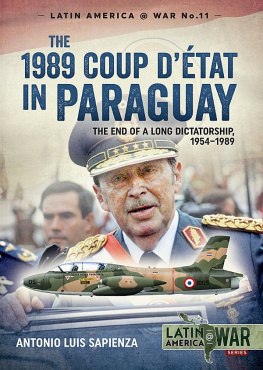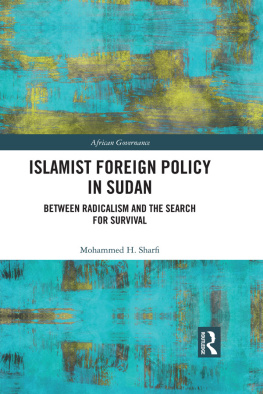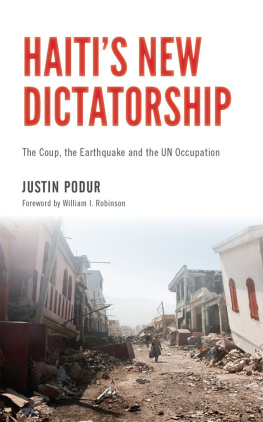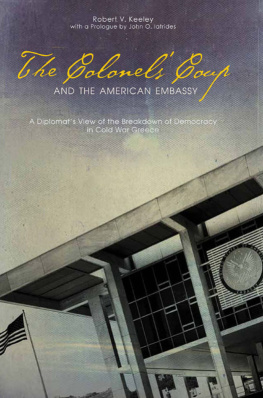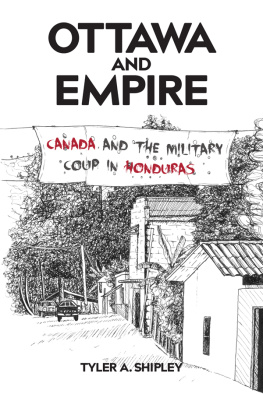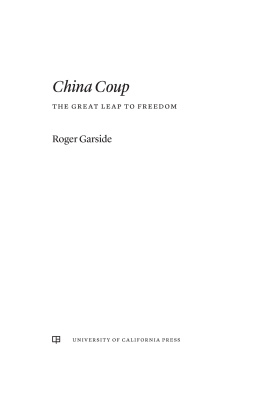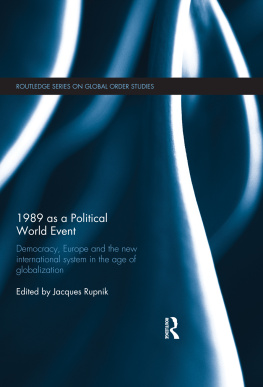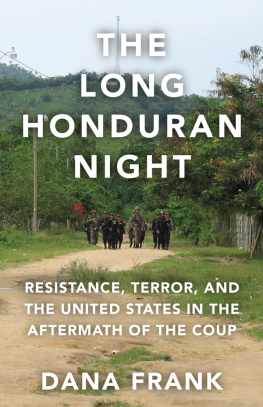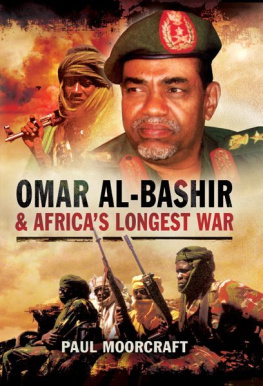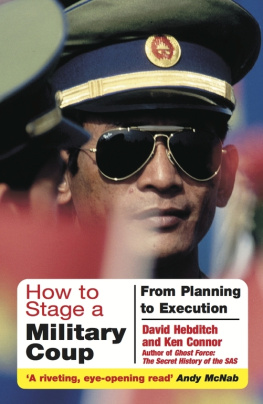The 1989 Coup d'tt in Paraguay
Antonio Luis Sapienza
Helion & Company Limited
Unit 8 Amherst Business Centre
Budbrooke Road
Warwick
CV34 5WE
England
Tel. 01926 499 619
Fax 0121 711 4075
Email: info@helion.co.uk
Website: www.helion.co.uk
Twitter: @helionbooks
Visit our blog http://blog.helion.co.uk/
Published by Helion & Company 2019
Cover designed by Paul Hewitt, Battlefield
Design ( www.battlefield-design.co.uk )
Text Antonio Luis Sapienza Fracchia 2019
Illustrations and maps as individually
credited
Color profiles drawn by and Tom Cooper,
DavidBocquelet and J.P. Vieira 2019, as
individually credited
Every reasonable effort has been made to
trace copyright holders and to obtain their
permission for the use of copyright material.
The author and publisher apologize for any
errors or omissions in this work, and would
be grateful if notified of any corrections that
should be incorporated in future reprints or
editions of this book.
ISBN 978-1-911628-69-9
eISBN 978-1-913118-06-8
Mobi ISBN 978-1-913118-06-8
British Library Cataloguing-in-Publication
Data
A catalogue record for this book is available
from the British Library
All rights reserved. No part of this
publication may be reproduced, stored in a
retrieval system, or transmitted, in any form,
or by any means, electronic, mechanical,
photocopying, recording or otherwise,
without the express written consent of
Helion & Company Limited.
We always welcome receiving book
proposals from prospective authors.
FOREWORD
T he history of Paraguay is markedly different to that of any of the other Latin American republics. Firstly, rather than the imposition of a foreign culture by the conquistadores , the native Guaran aborigines carried out a successful reverse takeover, so that Paraguay is the only truly bilingual country in the Western Hemisphere. Paraguayans, who form a much more homogeneous mixed-race society than elsewhere in the region, are proud to claim Guaran ancestry. Another factor making Paraguay completely distinct from its neighbours was the existence for 150 years, from the late 16th century onwards, of the reducciones , semi-autonomous, more or less benevolently despotic, theocratic communities, set up and administered by the Jesuit and Franciscan Orders. It is perhaps the habit of obedience acquired during that period that explains why the country has suffered from so many, often bizarre, despots since it achieved its independence in 1811.
The first, and certainly the most bizarre of these, was Dr Jos Gaspar Rodrguez de Francia, whose personality is best described by the title of El Supremo which he bestowed on himself. Austere, cruel and so frugal that he returned most of his salary to the treasury, Francia ruled Paraguay as an isolated, hermit kingdom in all but name from 1814 until his death in 1840.
Francia was succeeded by Carlos Antonio Lpez, who ruled from 1842 until his death in 1862 and who, whilst no less despotic than Francia, pursued diametrically opposed domestic and foreign policies, opening up the country to foreign influences and trade, promoting industry and introducing railways and the telegraph to Paraguay, making it, in many respects, the most advanced country in South America.
Lpez was followed by his son and designated heir, Francisco Solano, who was elected president in 1862 after a purely formal election. Exhibiting symptoms of megalomania and fiendish cruelty from an early age, encouraged by his Irish mistress Alicia Eliza Lynch, the younger Lpez embarked on a crazy and unwinnable war against his two most powerful neighbours, Argentina and Brazil, with Uruguay thrown in for good measure. This conflict, arguably the bloodiest in history and lasting from 1864 until the death of Lpez in 1870, resulted in the death of probably more than 60 percent of the population of Paraguay and reduced the country to utter prostration.
From the reconstruction period of the 1870s until the mid-1950s a period punctuated by frequent revolutions, coups dtat , two major civil wars and another bloody foreign war, with Bolivia, between 1932 and 1935 (known as the Chaco War), from which, this time, Paraguay emerged victorious, but at enormous human and economic cost few presidents completed their full electoral term. This situation continued until 1954, when yet another coup dtat placed General Alfredo Stroessner, the Commander-in-Chief of the Army, in the office of president.
Stroessner surprised all observers by surviving the relatively few attempts to overthrow him and winning a series of transparently rigged elections, remaining in power until his inevitable overthrow by a coup, led by General Andrs Rodriguez, in 1989.
Brutal and corrupt though his regime undoubtedly was, Stroessner gave Paraguay almost 35 continuous years of more or less stable government, in stark contrast to the chronic political instability which, apart from the brief interval of the Chaco War, had characterized the country throughout the previous half century.
While his shortcomings were many, Stroessners positive achievements were also considerable. Inheriting a country with only 190km of paved roads, he gave it some semblance of a highway system, with 1,500km of asphalted road. He also left the capital, Asuncin, of which only a square kilometre, in the city centre, had a piped water supply in 1954, with a comprehensive water and drainage system, and made considerable advances nationally in the areas of both education and public health.
Under Stroessner, the Armed Forces also provided valuable services to the civilian population. Army engineer units built roads and carried out other infrastructural projects, whilst military units shared their medical services with the civilians. One of the most important services of all was that of the military airline, Transporte Areo Militar ( TAM , Military Air Transport), which provided a reliable and low-cost air service between the capital and a dozen other locations, mostly in remote areas where such a service was not economically viable.
Stroessners economic policies were also consistently positive and included the construction of the largest hydroelectric power plant in the world, at Itaip, with which he exported electricity to neighbouring countries. He was internationally respected for his financial discipline and for meticulously servicing and repaying loans granted to the Paraguayan government by the World Bank and other institutions, thus keeping the currency stable, with a consistent rate of exchange of approximately 126 Guaranes to the US Dollar throughout most of his long regime. By contrast, after almost 30 years of democratic government, the rate of exchange in 2018 had fallen to over 6,000 Guaranes to the Dollar!
In this book, the internationally respected Paraguayan aviation historian Tony Sapienza has departed from his usual field to give a highly readable, detailed and comprehensive portrait of Stroessner, his rise to power, his lengthy regime and the coup which led to his eventual overthrow. Having devoted a chapter of my own book, Revolutions, Civil Wars and Coups dtat , to the same subject, I acknowledge the great compliment which he has paid me by asking me to write a foreword to it.
Adrian J. English
INTRODUCTION
T he year 1989 was crucial for Paraguay. After a long period of 35 years of dictatorship, General Alfredo Stroessner was finally overthrown by a violent coup dtat . In a sort of prophetic way, he once said, I came to power by arms and I will only leave by arms, and that came true on 2 February of that year.
But who was Alfredo Stroessner? In the first chapter of the book, the reader will find his biography and learn how he came to power after a coup in 1954. From then on, with fraudulent elections every five years, he was re-elected seven times, and even changed the Constitution to fit his purposes. He basically remained in power with the support of very powerful armed forces and the strong right-wing Colorado Party. During the 1950s and 1960s, he was also supported by the US to stop the expansionism of communism in Latin America. But he also wanted to be a popular president, so he started huge projects building roads, a running water and sewage system first in the capital, Asuncion, and then in several cities in Paraguay three big hydro electrical power dams including the biggest in the world with Brazil, and another one with Argentina international airports, a huge merchant navy and a national airline Lneas Areas Paraguayas (LAP). There was also a vital re-equipment of the countrys entire armed forces, including gunboats for the Navy, tanks, artillery and a huge arsenal of small arms for the Army, and advanced trainers, helicopters and attack jets for the Air Force. The Police forces were not forgotten, being very well equipped to suppress anyone who opposed the government. As in all dictatorships, human rights were not respected; there were many political prisoners who were tortured and even killed by the regime, thousands went into exile and there was no freedom of speech. The organisation of the Paraguayan armed forces is also covered in the first chapter.

